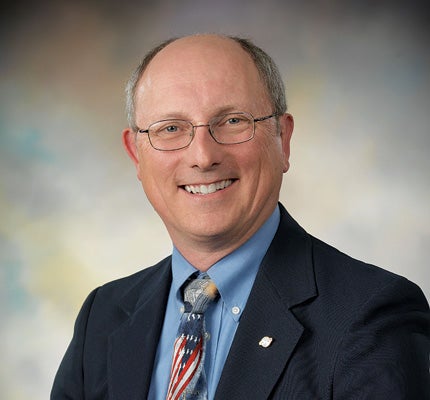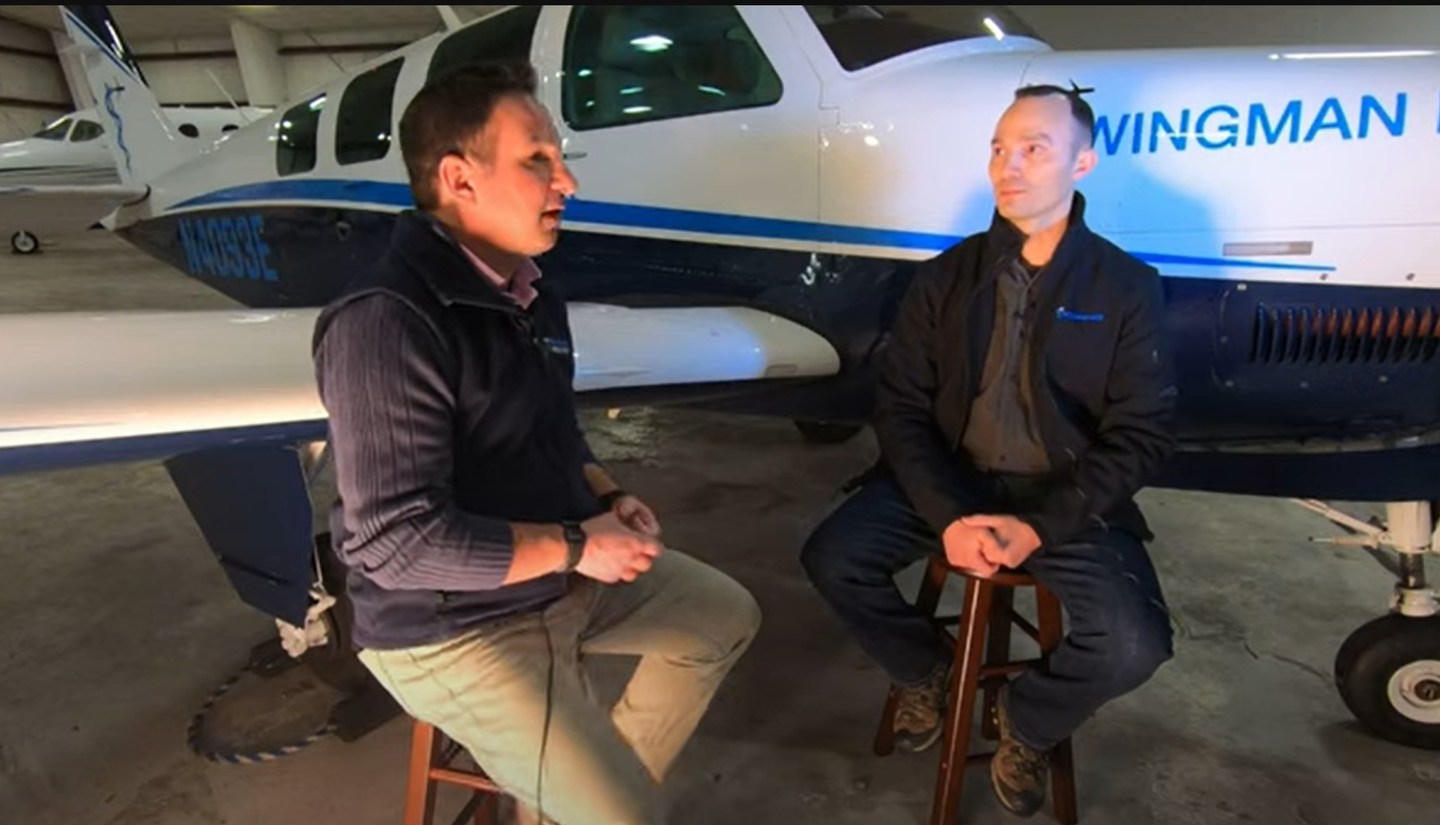The Heavy Glider
An intimate look at the Shuttle Orbiter
 |
I'm one fortunate aviator. My professional career has coincided with the 30-year flight history of the Space Shuttle program. Starting with NASA as an engineering student (with a commercial pilot's license), I grew up with the program---learning the procedures and preparing myself for the job of flight director, for which I was selected in 1993. While my responsibility is for overall crew safety and mission success, my true love is for this magnificent flying machine known as the Shuttle Orbiter. In both complexity and capability, it's unmatched in the history of human flying machines. Built on the knowledge gained through generations of experimental aircraft, it's the culmination of all that we know about flying a winged, maneuvering craft through the earth's atmosphere. It's the legacy of everyone who has ever dreamed, built or flown an airplane---the sum total of the aeronautical knowledge of millions.
The Orbiter is amazing to a pilot in almost every way. The highest and fastest flying machine (by far) that has ever been built, it leaps off the pad in Florida and is through Mach 1 in less than a minute. Effectively out the top of the atmosphere in another minute, it pitches over (inverted, so that you can see the horizon), leveling at about 350,000 feet to accelerate to orbital velocity. At the five-minute mark we roll heads-up, and if you look out the left window, you'll see Chesapeake Bay going by. When the main engines cut off at about eight and a half minutes, the same glance will show you the tip of Long Island and Cape Cod. Welcome to orbit! If, for some reason, you can't get to orbit due to systems failures, you can make a "short" cross-country trip and land in Spain less than 30 minutes after departure. Once in orbit, a complete revolution around the earth takes just 90 minutes.
Flying the Shuttle on orbit is mostly a matter of typing the correct numbers into the correct display and hitting the "Enter" key, but it's still magnificent to watch as the distance to a target---such as the International Space Station (ISS)---closes during a rendezvous. Orbital mechanics are much more puzzling than a gusty crosswind but fortunately more predictable, so the computers crunch the numbers, and the pilots make minor correction burns as we close within a few hundred feet. From that point on, it's once again a piloting skill---lining up the docking targets and using the maneuvering thrusters to ease the Orbiter into the docking gear on the Station. The departure can be equally stunning, as it generally features a fly-around of the ISS to photograph this human outpost on the final frontier.
While the ascent and orbit phases of a Shuttle flight are absolutely amazing, for an aviator, it's hard to beat Entry and Landing. I must confess---I love landing airplanes. It's simply a wonderful moment, where precision is rewarded with that feeling as the wheels spin up and you know that you've nailed it. I grew up in Cubs, graduated to the common GA birds and now enjoy the wonderful world of high-performance experimentals. But nothing compared to the first time I sat at the controls of the Space Shuttle simulator, hanging motionless at 10,000 feet, lined up with the runway just a couple of miles ahead. I knew that when the operator told the software to "run," I would be on the ground in about 45 seconds. The 15,000x300-foot runway actually looked fairly normal from that height, and the final approach speed of 300 knots makes it even more so. It's not until you come across the fence that you get the amazing ground rush of speed that comes from flying a beveled brick with a lift-to-drag ratio of about 4.
Because of the delta wing and elevon pitch controls, the Orbiter takes a bit of getting used to in the flair---the initial response to a pitch increase is an increase in sink rate, so the pilot needs to plan ahead and be patient with corrections. Trying to make an acceptable touchdown even better usually results in PIO, with a wild gallop down the runway and a fervent hope that the initial touchdown will be at the right spot in the oscillation. Touchdown conditions are largely determined by how you're set up crossing the threshold, and sweetening things up (as we all do in conventional airplanes) is generally a bad idea. Setting up that point on the inner glideslope is far easier with the head-up display (added in the 1980s) than it was in the early days. The fact that you have to make the landing work without a go-around eventually gets pushed to the back of your mind.
In the late '80s, as we recovered from the loss of the Challenger, I was part of a team developing improvements to the landing and deceleration systems for the Orbiter---better brakes, tougher tires, redundant steering actuators and the new drag chute. We spent countless hours flying landings to a full stop in various simulators, tweaking the software and developing procedures that led to a more robust vehicle. The drag chute development was especially exciting as we tried different sizes, attach points and reefing schemes to make it effective without lifting the Orbiter back off the runway when it had already run out of sufficient airspeed for control. Using a simulator made the rides exciting without being expensive---the only thing damaged in the inevitable hard landings that come with test flying were our egos. Out of that effort, we developed the confidence to add shorter runways to our catalog, giving ourselves additional options for aborts on ascent and emergency landing sites in case problems arose later in the mission. The Shuttle system became more flexible, enabling longer and more complex missions, such as the assembly of the Space Station.
In the three decades that the Space Shuttle fleet has operated, tens of thousands of dedicated men and women have played countless key roles to make over 130 missions both safe and successful. Every one of them has stories that weave a great tapestry telling the tale of America's reach into what we call "low Earth orbit (LEO)." While we often hear that the public is bored with the "same old thing" (going back and forth to the Space Station and doing science), the truth is that there are no boring missions, and we're operating at the very edge of human engineering capability every time. Margins are usually razor-thin in order to make the overall system light enough to achieve the necessary performance, and they leave little room for error.
Flying the Shuttle has been both a career and an adventure. Most of the people who have been involved would probably tell you that they would have done it for free, just to be a part of it. For the pilots among us, there's nothing to match the exhilaration of continuing the long expansion of the speed and altitude envelopes that began with the Wright Brothers' 6.8 mph, 120-foot-long (and a few feet high) flight. The early X-planes of the '50s led to the X-15 of the '60s---and many of the techniques and trajectories that we know and use today in the Shuttle can be traced directly to that program. All of those thoughts run through my mind as I slip into the left seat of the simulator one more time, and ask for the 50,000-foot reset point, hanging motionless above the desert of California. Rogers Dry Lake lies just under the nose, the lake-bed runways beckoning as they've done for countless landings of experimental machines.
As I call for the simulator to be taken to "run," I turn off the HUD, take the speed brake to manual, open it 50%, and roll into a steep turn with the runway in sight out the left window. The descent rate might be an order of magnitude more than I grew up with, but the Shuttle is still an airplane---a glider---that responds to a pilot's touch. Every once in a while, it's good to remember that and fly the machine by hand, eye and feel. The lake bed is large, and has been a beacon to many who have gone before---pilots stretching to enlarge the sphere of aeronautical knowledge and experience. Higher, faster and farther has always been the goal---and while programs come and go, the dream remains. Aviation is about exploring, and even for those of us who really are "airplane guys," our destination is the stars.
Paul Dye is the lead flight director for NASA Human Space Flight, served as a flight director on 37 Space Shuttle missions and flies an RV-8 that he built.

Subscribe to Our Newsletter
Get the latest Plane & Pilot Magazine stories delivered directly to your inbox






